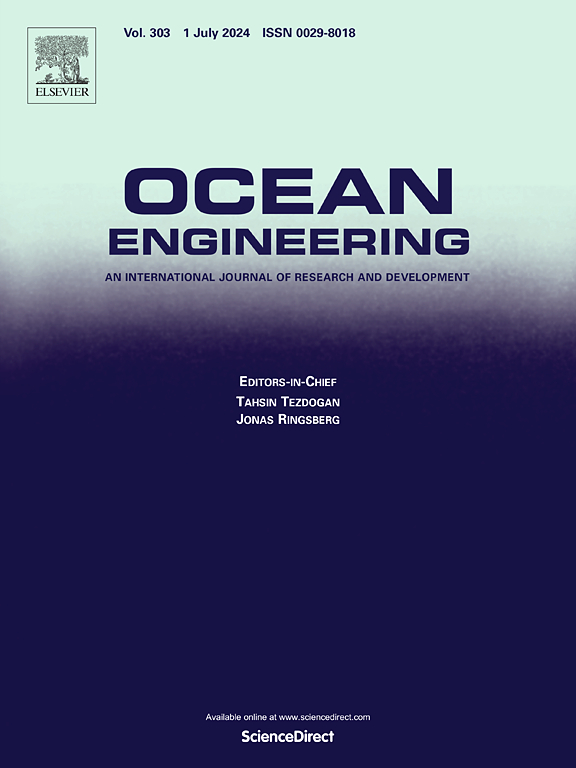Experimental study on intra-ply shear and inter-ply sliding behaviors in cryogenic composite hoses
IF 4.6
2区 工程技术
Q1 ENGINEERING, CIVIL
引用次数: 0
Abstract
Cryogenic composite hose is the key equipment for tandem offloading operation of Floating Liquefied Natural Gas (FLNG). During the tandem offloading, the harsh marine environment results in hulls motion responses and complex hose motion characteristics. And the interlayer mechanical properties of the hose are easily affected by the external environment. In this paper, the interlayer behavior under different conditions (cryogenic temperature, dry-wet condition, and normal pressure) were investigated. The results showed that the low temperatures had little effect on the shear and sliding properties, resulting from little effect on the surface friction behaviors of the tows under low-temperature environment. Besides, sliding behavior was more likely to occur in wet condition, which was mainly derived from the presence of a water film between the layers, thus reducing the coefficient of friction (COF). Additionally, the COF decreased first and then reached minimum value followed by a plateau with the increasing of the normal force. Considering the effects of the intra-ply shear behaviors of fabric and normal pressure, a friction model coupling shear and sliding behavior was proposed, which fitted well with the experimental data and provides a reference for future structural design, numerical simulation and life prediction of cryogenic composite hoses.

求助全文
约1分钟内获得全文
求助全文
来源期刊

Ocean Engineering
工程技术-工程:大洋
CiteScore
7.30
自引率
34.00%
发文量
2379
审稿时长
8.1 months
期刊介绍:
Ocean Engineering provides a medium for the publication of original research and development work in the field of ocean engineering. Ocean Engineering seeks papers in the following topics.
 求助内容:
求助内容: 应助结果提醒方式:
应助结果提醒方式:


